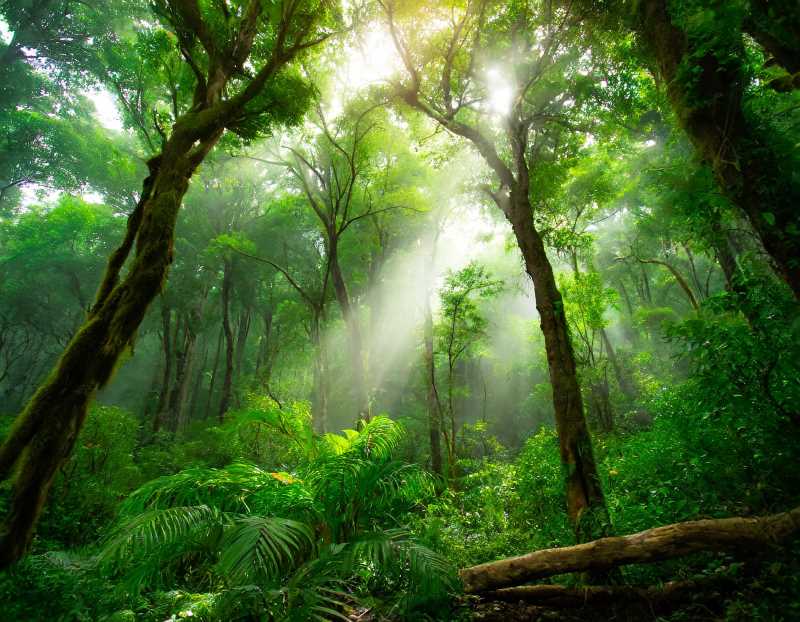Can Mexico Save its Forest Legacy?
Mexico's forests hold immense biodiversity but suffer from neglect and illegal logging. Dr. Piñero Dalmau urges for science-backed policy that allows communities to sustainably benefit from forests, ensuring their health for future generations.

Mexico occupies first place in the world for the number and diversity of pines and oaks; In contrast, it has reforestation programs, but without a sustainable economic approach; There is no data on what is planted and what survives, says researcher and former director of the Institute of Ecology, UNAM, Daniel Piñero Dalmau.
He believes that adding to this inconvenience is the serious problem of the timber trade, since in some regions, including around Mexico City, it has fallen into the hands of illegal loggers. Helping to conserve the wealth of our forests “is in all of our interests; “It is for our own survival.”
This is a resource that can help communities live, the expert emphasizes; The knowledge we have about them is so great that state, regional and national programs can be developed to take advantage of them.
It is important that Mexico resumes a forestry policy, especially considering the communities, he details on the occasion of the International Day of Forests, which is celebrated on March 21, with the theme “Forests and innovation: new solutions for a world better”.
It should be noted that, according to the United Nations, the fight against deforestation requires new technological advances. “With 10 million hectares lost annually due to the disappearance of forests and approximately 70 million hectares devastated by fires, these technological innovations are essential for early warning systems and the sustainable production of raw materials.”
The international organization establishes that it is necessary to empower indigenous peoples, who are the guardians of most of the forests still intact in the world, through land mapping and access to climate financing, which will contribute to preserving its crucial role in biodiversity conservation and carbon sequestration.
Ecosystem restoration, including reforestation efforts, can also significantly contribute to mitigating climate change and improving food security while promoting sustainable wood products.
These terrestrial ecosystems, the organization adds, are home to 80 percent of the known amphibian species; They contain more than 50 percent of the world's carbon stock in soils and vegetation; Forested watersheds and wetlands provide 75 percent of the planet's accessible freshwater. But more than 30 percent of new diseases since 1960 are attributed to land use change, including deforestation.
Diversity
The researcher from the Department of Evolutionary Ecology explains that, in general, there are two types of forests: temperate and tropical. The first are the “typical” ones, of one or a few species, for example, firs or pines; there are also hundreds of species, called jungles.
Mexico, a megadiverse country, has tropical, temperate, dry, or humid forests, present in the mountains of Chiapas, Madre Oriental and Madre Occidental, as well as in the Trans-Mexican Volcanic Belt, or in the southeast, in states such as Campeche and Quintana Roo, he points out.
According to the National Forest Information System, our country has 138.7 million hectares with forest vegetation coverage; That is, approximately 70.6 percent of the national territory is covered by temperate forests and jungles, but mangroves and arid and semi-arid ecosystems are also considered here.
Meanwhile, according to data from the National Forestry Commission, in the period 2001-2021, on average, 208,850 hectares per year have been lost due to deforestation, that is, “the permanent loss of forest vegetation due to induced or natural causes.
The main reasons for this decrease are its change to grasslands, at 74.43 percent; to agricultural land, at 21.41 percent; to human settlements, by 2.41 percent; to other uses, by 1.68 percent; and to wetlands, at 0.07 percent.
Forestry policy, believes the doctor in genetics, should be aimed at sustainably using these forests, “but in Mexico we have been very unlucky to do this.”
These sites, emphasizes Piñero Dalmau, provide environmental services, such as water and wood sources, in addition to, on many occasions, they function as tourist areas. They constitute a renewable resource that must be used, but in a sustainable way.
In the central region of the country, corresponding to the Trans-Mexican Volcanic Belt, the population is large. However, we should not have water problems, because the forests could generate sufficient reserves “for all of us who live from Colima to Veracruz.”
However, they are not conceived as providers of this and other services to the communities and, therefore, there is no investment in them either so that the inhabitants realize the importance they have. Faced with these ecosystems, “we must have a mixed position of conservation and, at the same time, rational use,” he estimates.
Innovation
In the laboratory, Daniel Piñero and his collaborators use advanced genetic technologies to study forests and establish which are the most important regions to conserve.
“Data are obtained from the complete genome of the species and that information is used, for example, to find out what type of trees are tolerant to ozone in Mexico City to use them in reforestation. Knowledge has advanced a lot.”
The expert points out that places that have the greatest diversity of species must be conserved, so that evolutionary processes continue to occur in populations.
According to his research, “many of the pines that we have studied in the Sierra Madre Oriental and Occidental are species that have been generated in the last five or 10 million years; That is the historical perspective we have.” Its replacement rate could take at least another five million years.
We also know, he points out, that the endemic species of the mountain peaks from Colima to Veracruz are not connected: although a certain species from the Iztaccíhuatl or Ajusco forest seems the same to people, in reality the speciation processes are specific to each place; therefore both must be preserved. If the “patches” of vegetation in different areas are not preserved, the differentiation and divergence of local populations is prevented.
In Mexico we have so many ecosystems that we require conservation to be in all states, municipalities and cities, says Piñero Dalmau.
In 2012, the United Nations General Assembly proclaimed March 21 as the International Day of Forests. Through this celebration, tribute is paid to the importance of all the types there are, and an attempt is made to raise awareness about it.




